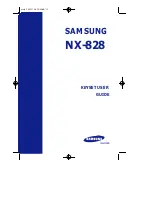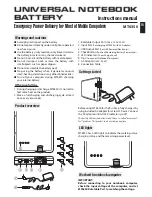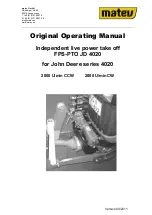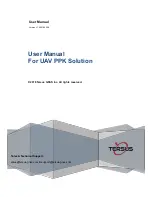
19
Informacje ogólne
Aurilis Group nie ponosi odpowiedzialności za szkody wyrządzone osobom i rzeczom, za zgubienie ładunku, ani za szkody wyrządzone przez ten ładunek, a spowodowane nieprawidłowym montażem lub
użytkowaniem produktu albo nie przestrzeganiem instrukcji montażu dołączonej do produktu.
Montaż produktu
Należy przeczytać instrukcję montażu i sprawdzić czy opakowanie zawiera wszystkie wymagane części. Należy starannie przeczytać i przestrzegać instrukcji montażu oraz listy zaleceń. Nie wolno montować
produktu inaczej niż jest to pokazane w instrukcji.
Ładunek
Nie wolno przekraczać ładowności wykazanej w instrukcji montażu produktu.
Maksymalna ładowność zawarta w instrukcji obsługi samochodu jest ważniejsza niż ta w instrukcji montażu produktu. Nie należy przekraczać niższej z tych dwóch wartości maksymalnej ładowności.
Maksymalna ładowność bagażnika rowerowego zgodnie z instrukcją odnosi się zarówno do samochodu w ruchu jak i parkującego.
Ładunek musi być zamocowany bezpiecznie. Nie wolno używać elastycznych pasków lub taśm.
Należy sprawdzić w instrukcji montażu i nie przekraczać maksymalnej wagi rowerów, które mogą być przewożone na bagażniku.
Bagażnik został zaprojektowany do przewożenia rowerów tylko z ramami tradycyjnymi: rowery typu tandem nie mogą być przewożone.
Zawsze należy sprawdzać w instrukcji i nie przekraczać maksymalnej szerokości (średnicy) ram rowerowych dopuszczonych do przewożenia na bagażniku.
W przypadku rowerów z ramami lub widelcami karbonowymi należy skonsultować się z producentem lub sprzedawcą roweru czy ten bagażnik może być użyty.
Aurilis Group nie ponosi odpowiedzialności za uszkodzenia ram karbonowych podczas montażu i przewożenia rowerów na bagażniku.
Przed podróżą z rowerami należy z nich usunąć wszystkie łatwo demontowalne akcesoria takie jak, siodełka dla dzieci, koszyki, bidony, pompki czy też zabezpieczenia antykradzieżowe (chyba, że są integralną
częścią roweru). Podczas jazdy, ze względu na wzrost oporu powietrza czy też wibracje, akcesoria te mogły by spaść i spowodować zagrożenie dla pieszych i innych samochodów.
Warunki i zalecenia związane z jazdą z bagażnikiem
Bagażnik nie może być używany w warunkach jazdy terenowej. Prędkość jazdy należy dostosować do warunków drogowych i przewożonego obciążenia. Ładunek trzeba regularnie sprawdzać. Za perfekcyjny
stan bagażnika oraz poprawne zamocowanie rowerów i ładunku odpowiada kierowca (nawet jeśli to inna osoba je montowała). Przed jazdą należy się upewnić, że bagażnik rowerowy został bezpiecznie
zamontowany, sprawdzić to po przejechaniu krótkiego dystansu (50km) i sprawdzać regularnie w czasie przerw w podróży. W przypadku dziwnych dźwięków, przesuwania się bagażnika lub ładunku, nagłego
pogorszenia się prowadzenia samochodu czy też wystąpienia innych nienormalnych objawów należy się zatrzymać i ponownie sprawdzić czy bagażnik i ładunek są zamocowane bezpiecznie, zgodnie z
instrukcją montażu.
Wysokość , długość i ewentualnie szerokość pojazdu zarówno z samym bagażnikiem jak i z rowerami wzrasta. Dlatego należy zachować ostrożność przy cofaniu, wjeżdżaniu do garażu , na prom, na kryte
parkingi itp.
Zużyte lub uszkodzone części muszą być natychmiast wymienione na nowe, tylko oryginalne.
Zamykane bagażniki po zamocowaniu muszą być zawsze zamknięte. Kluczyk musi być wyjęty i podczas jazdy z bagażnikiem przechowywany w pojeździe.
Waga i długość bagażnika wraz z ładunkiem mogą mieć wpływ na prowadzenie pojazdu, zwłaszcza w warunkach silnego bocznego wiatru, ostrych zakrętów czy gwałtownego hamowania, należy więc zawsze
zwracać uwagę na limity prędkości, progi zwalniające oraz dziury na drogach aby zminimalizować możliwość przemieszczenia się bagażnika. Dlatego należy dostosować styl i prędkość jazdy do tych warunków
ale też nigdy nie przekraczać 130 km/h.
Podczas jazdy z bagażnikiem rowerowym mogą być słyszalne dźwięki spowodowane wiatrem. Mogą się one zmieniać w zależności od samochodu i rodzaju ładunku.
Ze względu na oszczędność paliwa (ochrona środowiska) oraz bezpieczeństwo zarówno pieszych jak i innych użytkowników dróg, bagażnik powinien być zawsze demontowany kiedy nie jest użytkowany.
Obsługa
Bagażnik powinien być regularnie myty ciepłą wodą przy użyciu szamponu samochodowego, zwłaszcza po użytkowaniu w rejonach nadmorskich (efekt słonej wody) oraz zimą kiedy drogi są posypywane solą.
Śruby, bolce i zamki muszą być regularnie smarowane.
Bagażnik rowerowy oraz belki bazowe (dachowe) muszą być zdjęte przed wjazdem do myjni automatycznej.
Bagażnik należy przechowywać w suchym miejscu.
Wszystkie części bagażnika muszą być składowane bezpiecznie. Należy pamiętać o czyszczeniu i przechowywaniu bagażnika zgodnie z instrukcją.
Jeśli jedna lub więcej części bagażnika ulegną zgubieniu lub zużyciu należy je wymienić na części oryginalne dostępne u producenta, dystrybutora lub sprzedawcy.
W celu szybkiego otrzymania części zamiennych podaj detale dotyczące produktu oraz numer seryjny części podczas składania zamówienia.
W celu szybkiego zamówienia kluczyka w przypadku jego zgubienia lub zniszczenia, zaraz po zakupie bagażnika trzeba odpisać nr kluczyka, który jest widoczny zarówno na nim jak i na zamku.
General information
Aurilis Group has no responsibility for injury to persons, damage to removable or fixed items, loss of cargo or any other damage or loss caused by incorrect assembly or use of the product or use of the
product without following the instructions that are part of the product.
The bike rack and all its parts cannot be modified in any way.
In case of questions or concerns about the product, contact your Green Valley dealer.
Read all the instructions and warranty information carefully before installing and using the bike carrier.
Keep the safety instructions for future reference and be sure to give these instructions to any other user.
Mounting of product
Read the assembly instructions and check that all the necessary parts of the carrier are available in the packaging.
Read and follow the assembly instructions and the list of recommendations carefully.
Do not attempt to mount the bike carrier in a different way rather than the one shown in the assembly instructions.
Loading
Do not exceed the maximum loading capacity of the carrier specified in the assembly instructions.
The maximum recommended loading capacity of the vehicle is a priority over the loading capacity specified in the assembly instructions, in case of doubt always consider the given maximum lower load.
The maximum loading capacity of the bike carrier, as per assembly instructions, applies to vehicles in movement as well as in parking conditions.
The load must be securely fixed. Do not use elastic belts or straps.
Check and do not exceed the maximum bike weight as per assembly instructions.
The bike rack has been designed to carry only bikes with standard frames: tandem bikes cannot be carried.
Always check and do not exceed the maximum width of the bike frame (diameter) specified in the assembly instructions.
In case of bikes with forks or carbon frames, check with the bike manufacturer or dealer if the bike carrier can be used.
Aurilis Group has no responsibility for any damage caused to carbon frames during the assembly and/or use of the bike carrier.
All easily removable parts of the bike must be removed before driving, including, but not limited to, child seats, baskets, anti-theft chain locks (unless they are permanently fixed) and tire pumps. These parts
may loose while driving due to increased air resistance and vibration, and they can be a danger to pedestrians and vehicles on the road.
Driving conditions and regulations
The bike carrier cannot be used in off-road driving conditions. Adjust the speed according to road conditions and to the load that is carried on. Check load regularly.
The driver of the vehicle is the only responsible for the perfect condition of the bike carrier and for the secure locking of bike carrier and load (even if mounted by another person).
By using the bike carrier, make sure it is safely mounted, check after driving a short distance (50 km) and then at regular intervals. In case of strange noises, movement of the load and/or the carrier, a differ
-
ent behavior of the vehicle or other unusual conditions, stop and check if carrier and load are securely fixed according to the assembly instructions.
The total length and/or height of the vehicle may increase when mounting a bike carrier. Bikes themselves increase the overall width and height of the vehicle. Be very careful while using reverse gear and/or
entering garages, ferries, etc ...
Replace any worn or damaged parts of the carrier immediately.
While driving all leverages, brackets and nuts must be fastened according to the assembly instructions.
Lockable bike racks must always be in locked position. Keys must be removed and stored inside the vehicle while driving.
Please note that driving and braking behavior of the vehicle (including curving) may change and when mounting a bike carrier, the vehicle’s behavior may be influenced by side winds.
Adjust the speed of the vehicle according to carried load and driving conditions, such as type and quality of the road, wind conditions, traffic and speed limits, but in no case never exceed 130 km/h.
Always comply with speed limits and other traffic regulations.
While driving it is possible to hear a noise that is due to the wind that can change according to vehicle and load.
In order to save fuel, both for environmental impact and for reasons related to the safety of pedestrians and vehicles on the road, the bike carrier must be removed from the vehicle when not in use.
Maintenance
Clean the bike rack regularly by using hot water or car shampoo, especially after using the bike carrier in areas along the coast (effect of salt water) or during winter time, when salt is spread on the roads.
Screws, bolts and locking devices (if any) must be lubricated at regular intervals.
Remove the bike rack and the roof bars before using an automatic washing system.
Keep the carrier in a dry place.
All components of the carrier must be stored securely. Remember to clean and store the bike rack as per instructions.
If one or more parts of the bike rack are lost or one or more parts wear out, replace them only with original spare parts. Spare parts can be purchased from the dealer or from the manufacturer.
In order to receive spare parts quickly and avoid therefore waiting for a long time, provide details of the product and the serial number when sending an order or request.
In order to be sure that the key is replaced in the fastest way in case of loss or defects, write down the number of lock and key which can be found on lock and on key themselves.
Содержание 160.659
Страница 2: ...2 x2 x1 x2 x1 x3 x2 x3 x1 x2 OPTION 160 850 PAG 15 x1...
Страница 3: ...3 x1 x2 x1 x2 x3 1 2 3 4...
Страница 5: ...5 LOCK Note Your Key Number 6 7 8 9...
Страница 6: ...6 10 11...
Страница 7: ...7 Note Your Key Number 12 13...
Страница 9: ...9 LOCK Bike remove Enlever le V lo Rimuove la bici PUSH Note Your Key Number 15 16...
Страница 11: ...11 180 180 180 19 20 21...
Страница 12: ...12 OK NO 22 23 24...
Страница 13: ...13 Children s bicycle V los pour enfants Biciclette da bambino...
Страница 15: ...15 x1 x2 x3 OPTION 160850 Fitting for steel bars x3 x3 1 2 3...
Страница 16: ...16 LOCK 4 5...


































